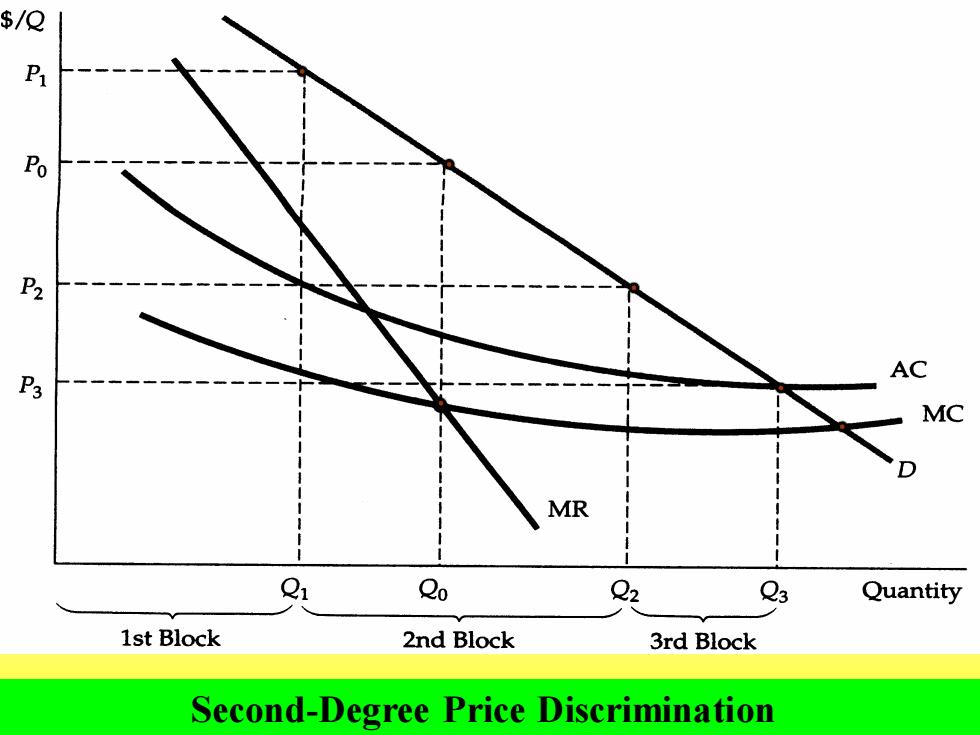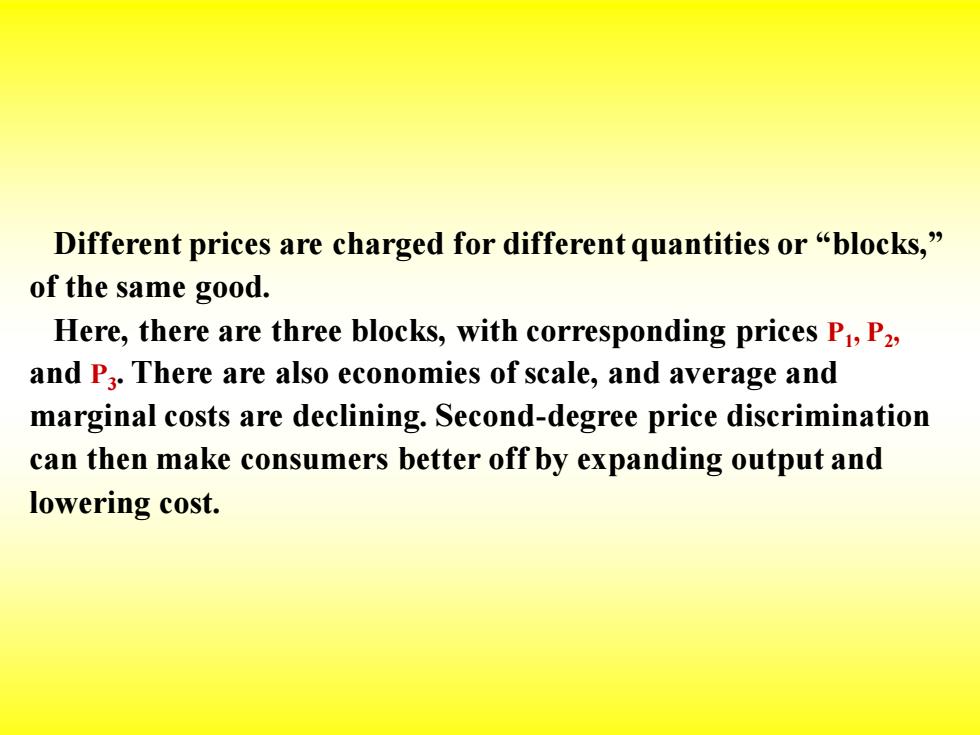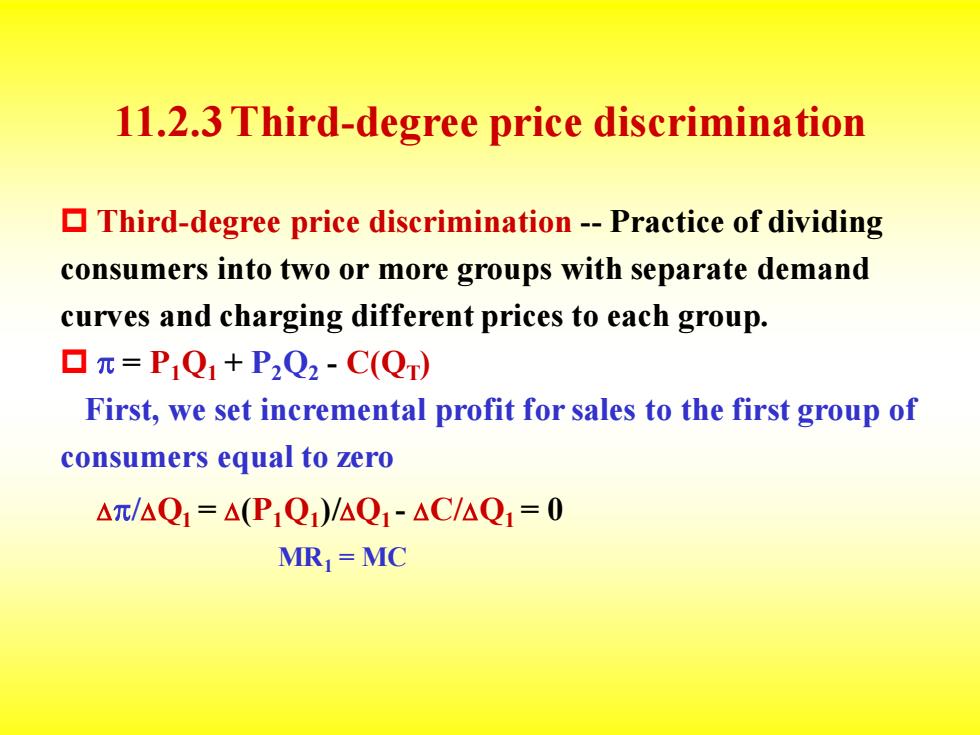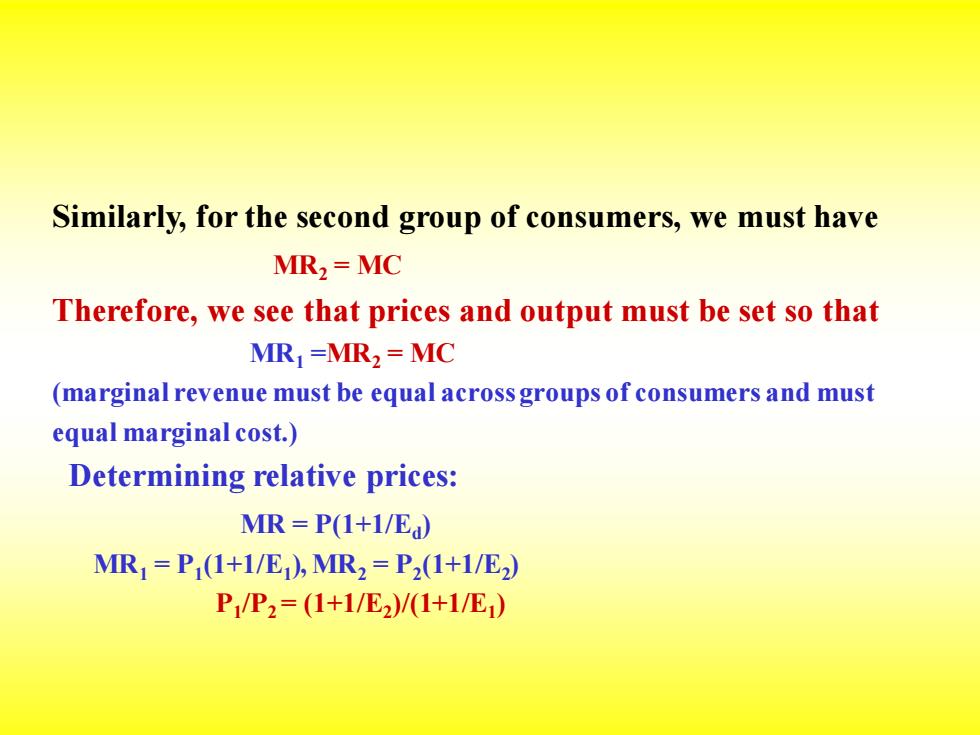
11.2.2 Second-degree price discrimination Second-degree price discrimination-Practice of charging different prices per unit for different quantities of the same good or service. ▣Block pricing(份段定价)-Practice of charging different prices for different quantities or "blocks"of a good
11.2.2 Second-degree price discrimination Second-degree price discrimination - Practice of charging different prices per unit for different quantities of the same good or service. Block pricing (分段定价) – Practice of charging different prices for different quantities or “blocks” of a good

$/Q P Po P2 P3 MC MR Q1 2o Q2 Q3 Quantity 1st Block 2nd Block 3rd Block Second-Degree Price Discrimination
Second-Degree Price Discrimination

Different prices are charged for different quantities or "blocks," of the same good. Here,there are three blocks,with corresponding prices Pi,P2, and P3.There are also economies of scale,and average and marginal costs are declining.Second-degree price discrimination can then make consumers better off by expanding output and lowering cost
Different prices are charged for different quantities or “blocks,” of the same good. Here, there are three blocks, with corresponding prices P1 , P2 , and P3 . There are also economies of scale, and average and marginal costs are declining. Second-degree price discrimination can then make consumers better off by expanding output and lowering cost

11.2.3 Third-degree price discrimination Third-degree price discrimination-Practice of dividing consumers into two or more groups with separate demand curves and charging different prices to each group. ▣元=PQ1+P2Q2-C(Q) First,we set incremental profit for sales to the first group of consumers equal to zero △π/△Q1=△(P1Q)/△Q1-△C/AQ1=0 MR=MC
11.2.3 Third-degree price discrimination Third-degree price discrimination - Practice of dividing consumers into two or more groups with separate demand curves and charging different prices to each group. = P1Q1 + P2Q2 - C(QT) First, we set incremental profit for sales to the first group of consumers equal to zero /Q1 = (P1Q1 )/Q1 - C/Q1 = 0 MR1 = MC

Similarly,for the second group of consumers,we must have MR2=MC Therefore,we see that prices and output must be set so that MR=MR2=MC (marginal revenue must be equal across groups of consumers and must equal marginal cost.) Determining relative prices: MR=P(1+1/E) MR1=P1(1+1/E),MR2=P2(1+1/E2) PP2=(1+1/E2)/1+1/E)
Similarly, for the second group of consumers, we must have MR2 = MC Therefore, we see that prices and output must be set so that MR1 =MR2 = MC (marginal revenue must be equal across groups of consumers and must equal marginal cost.) Determining relative prices: MR = P(1+1/Ed ) MR1 = P1 (1+1/E1 ), MR2 = P2 (1+1/E2 ) P1 /P2 = (1+1/E2 )/(1+1/E1 )